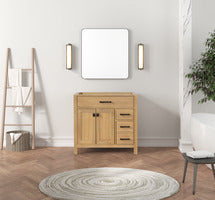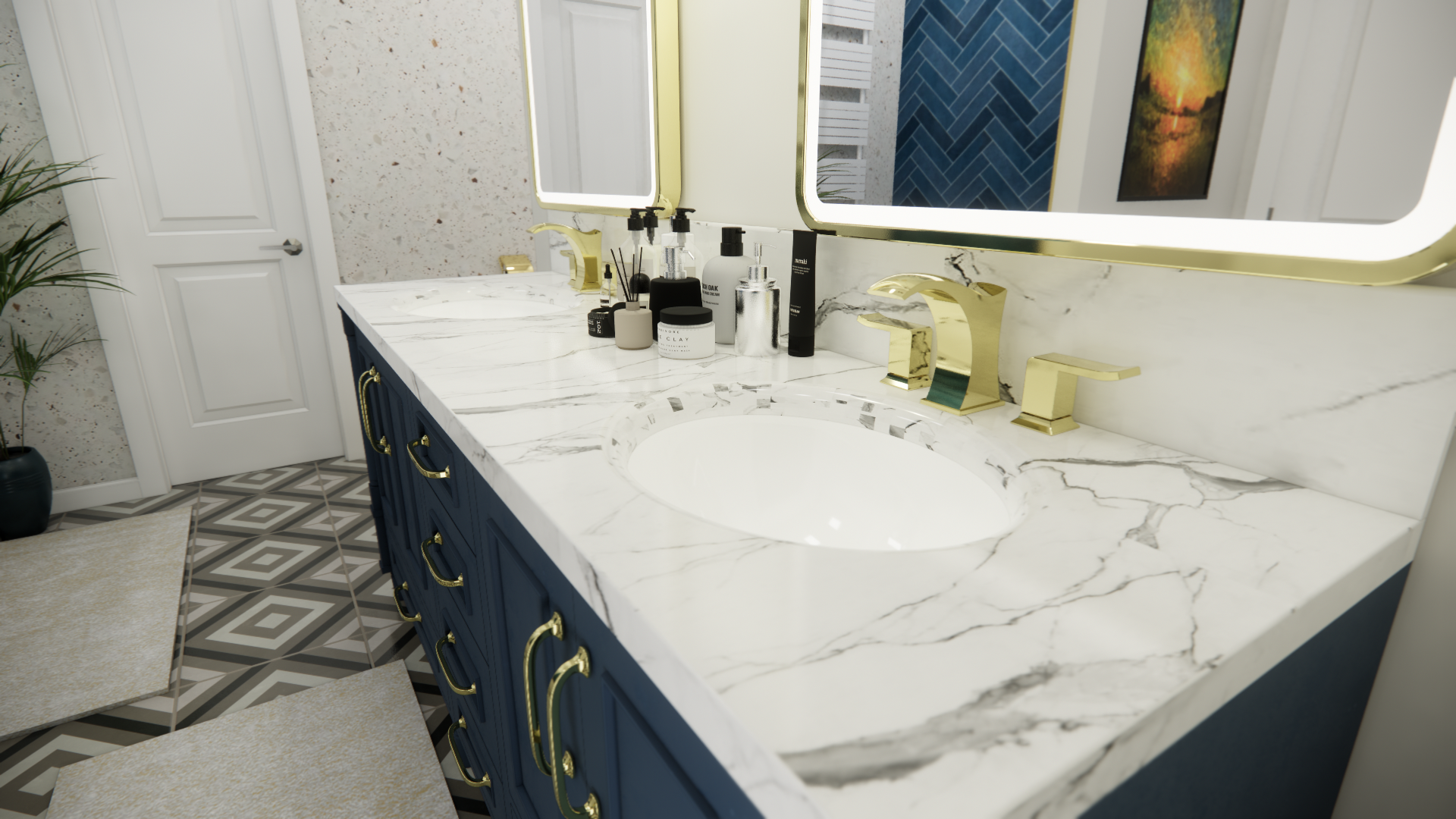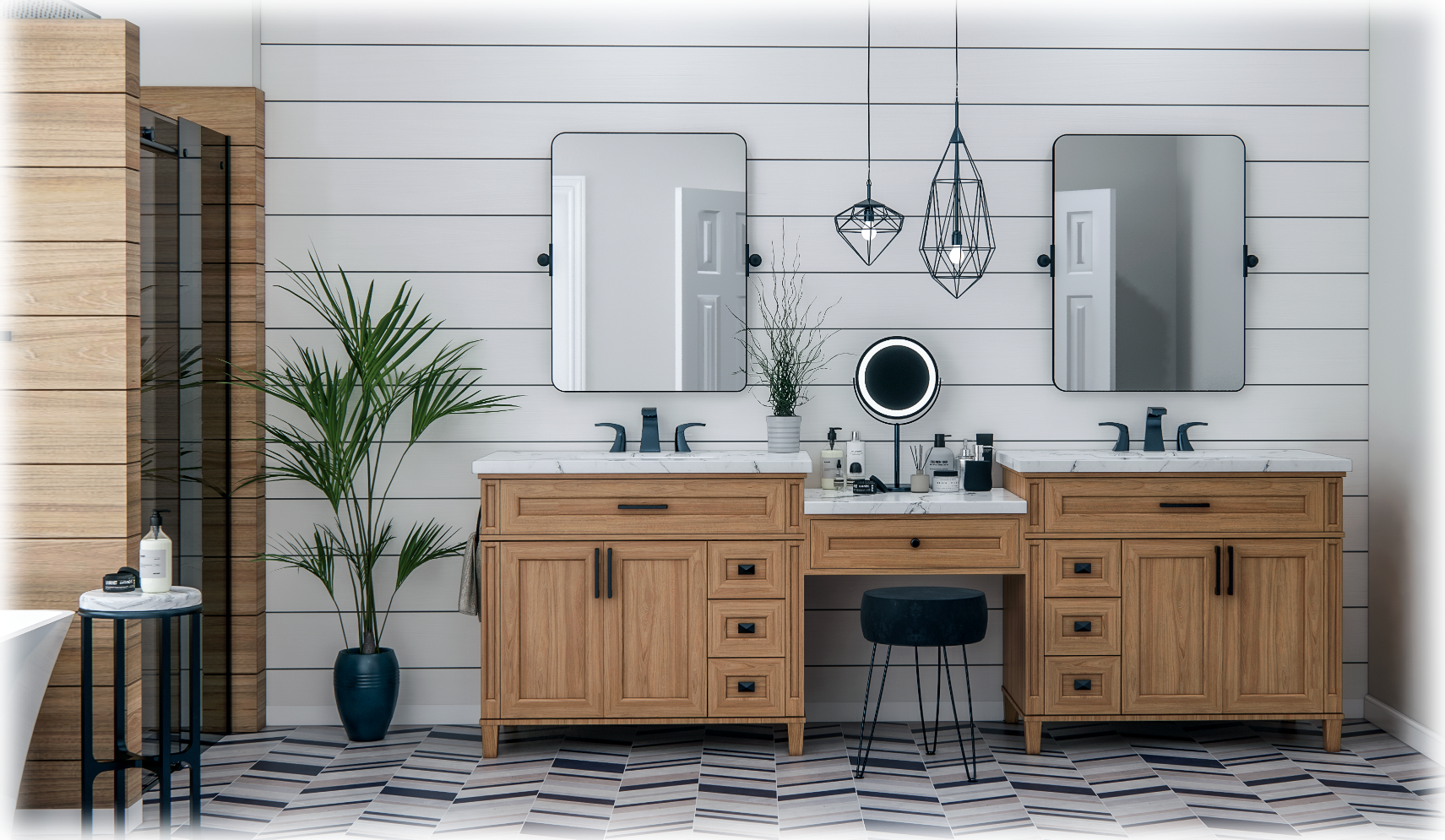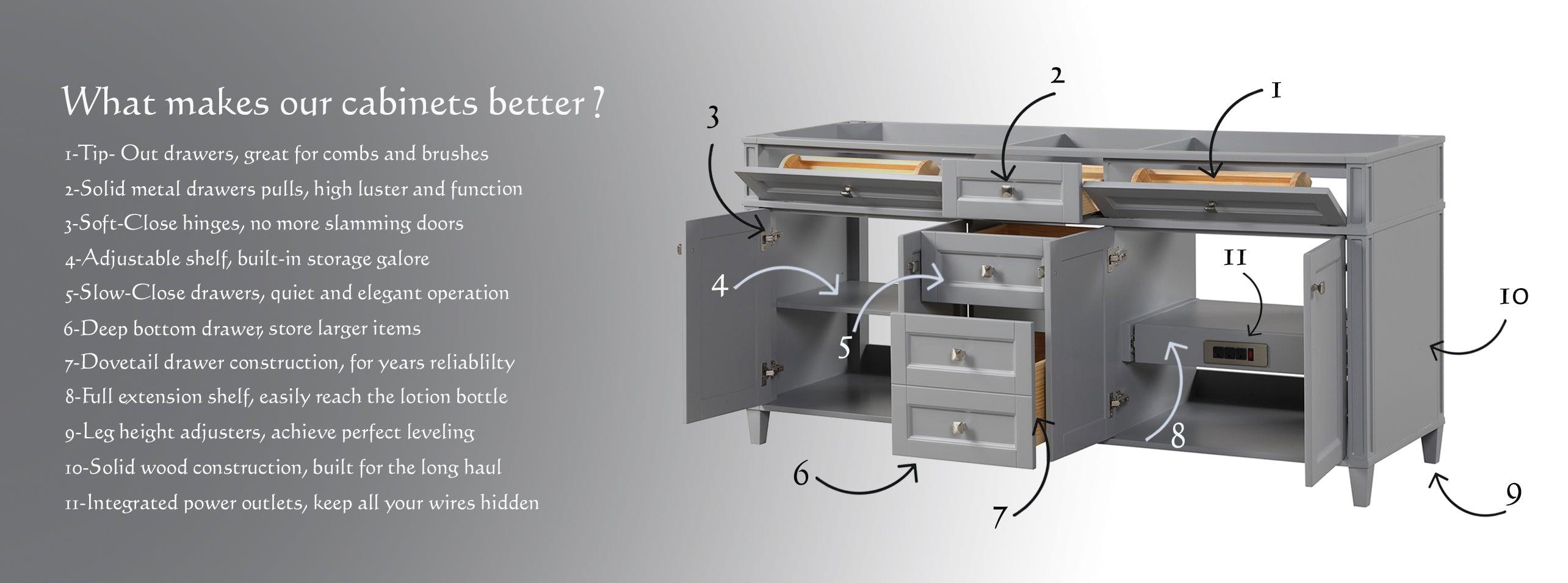Single sink bathroom vanity cabinets:
Choosing the Perfect Single Sink Vanity for Your Bathroom: Style, Finish, Quality, Functionality, and Budget Considerations
Shopping for a single sink vanity may seem like a simple task, but it can make or break the design and functionality of your bathroom. Whether you’re doing a full renovation or just refreshing the space, the vanity is a focal point that brings both form and function to the room. It’s not just about choosing something that looks good—it’s about ensuring your vanity will hold up to daily use while fitting your style and budget. In this guide, we’ll walk through the key things to consider when selecting a single sink vanity, including style, finish, construction quality, functionality, and how to stay within your budget.
Style: Making a Statement
The first thing to think about when shopping for a vanity is the overall style you want to achieve in your bathroom. Your vanity should complement the room's design, but it also needs to match your taste and lifestyle. Below are some popular vanity styles and what they bring to the table:
-
Traditional: If you love classic elegance, a traditional vanity may be the right choice. These vanities typically have rich wood tones, decorative molding, and furniture-like feet. They evoke a timeless feel and pair beautifully with more ornate bathrooms.
-
Transitional: This style sits between traditional and modern. Transitional vanities tend to be simpler than traditional ones but warmer and more inviting than contemporary designs. They’re a safe choice if you want a vanity that will stand the test of time in terms of both style and function.
-
Modern/Contemporary: If you’re looking for clean lines and minimalism, modern vanities are all about simplicity. Sleek, handle-less drawers, flat-front doors, and high-gloss or matte finishes define this style. It’s perfect for those who prefer a minimalist, clutter-free aesthetic.
-
Rustic/Farmhouse: These vanities are typically made of natural wood or distressed finishes. They have a charming, relaxed vibe that works well in country-inspired or eclectic homes. Look for features like sliding barn doors, open shelving, or reclaimed wood to enhance this look.
When selecting a style, keep in mind the size and overall aesthetic of your bathroom. A large, ornate vanity might overpower a small bathroom, while a sleek, contemporary piece may feel out of place in a more traditional home.
Finish: Defining the Look
The finish of your vanity is just as important as its style. Different finishes can dramatically change the mood of the room and impact maintenance. Here’s what you should consider:
-
Wood Finishes: A natural wood vanity brings warmth and richness to a bathroom. Lighter woods like oak or ash will give a more casual, Scandinavian feel, while darker finishes like walnut or mahogany add elegance. However, wood requires proper sealing and maintenance to protect against moisture damage.
-
Painted Finishes: A painted vanity—whether in white, gray, or even bolder hues like navy or emerald green—can brighten up a space or make a statement. Lighter colors, like white or pale gray, create a fresh, airy look, while darker colors can add sophistication. Keep in mind that dark paint can show water spots and soap scum more easily.
-
Laminate or Veneer: If you’re on a budget or want a low-maintenance option, laminate or veneer finishes are worth considering. These finishes are often designed to mimic real wood or stone and can be a great alternative for busy households. Just ensure the materials are moisture-resistant, as cheaper laminates can warp over time in a humid bathroom environment.
Construction Quality: A Vanity That Stands the Test of Time
When it comes to construction, not all vanities are created equal. Your bathroom is a high-traffic, high-moisture environment, so durability should be at the top of your list. Here are some aspects of construction quality to look out for:
-
Materials: Solid wood vanities are the most durable, but they tend to be more expensive. MDF (medium-density fiberboard) and particleboard are cheaper alternatives, though they are less resistant to moisture. If you go with MDF, look for a high-quality veneer to protect the surface from warping or damage.
-
Joinery: Pay attention to how the vanity is constructed. Dovetail joints on drawers are a sign of quality craftsmanship and durability. Cheaper vanities may use stapled or glued joints, which can break down over time.
-
Hardware: Check the hardware, such as knobs, handles, and hinges. Quality vanities will come with solid metal hardware that feels sturdy and smooth to operate. Soft-close drawers and doors are a bonus, as they prevent slamming and wear over time.
Functionality: Space and Storage
A single sink vanity can be both a design statement and a functional workhorse. The key is finding one that balances style with practical features that suit your needs. Here are a few things to keep in mind:
-
Size and Proportion: The size of your vanity is crucial. Measure your bathroom carefully to ensure the vanity fits comfortably, leaving enough space for other fixtures like the toilet and shower. Single sink vanities typically range from 24 to 48 inches wide. Make sure to pick a size that provides ample counter space without overwhelming the room.
-
Storage: One of the biggest considerations for a single sink vanity is storage. Drawers, cabinets, and shelves should accommodate daily necessities such as toiletries, towels, and cleaning supplies. If you have a small bathroom, opt for a vanity with clever storage solutions, like built-in organizers, pull-out trays, or even open shelving to store baskets or extra towels.
-
Countertop Space: Having enough countertop space is important, especially if multiple people use the bathroom. A single sink vanity can still offer ample space around the basin for things like soap dispensers, toothbrush holders, and cosmetics.
-
Sink Type: When choosing a vanity, you’ll need to decide whether you want an undermount sink, vessel sink, or integrated sink. An undermount sink offers a clean, seamless look, while a vessel sink sits on top of the counter and adds visual interest. Integrated sinks are easy to clean and create a streamlined appearance.
Budget: Finding a Vanity That Fits Your Finances
Your budget is a major factor when choosing a vanity. Single sink vanities come in a wide range of prices, from budget-friendly options to high-end, custom designs. Here’s what to expect in each price range:
-
Budget Vanities: In the $200-$600 range, you’ll find vanities made from MDF, particleboard, or laminate. These are great for smaller bathrooms or guest bathrooms but may not last as long in high-use spaces like a master bath.
-
Mid-Range Vanities: If you’re willing to spend $600-$1,200, you can find vanities made from solid wood or high-quality MDF with better finishes and hardware. You’ll also have more options for design and countertop materials like quartz or granite.
-
High-End Vanities: In the $1,200-$3,000 range, you can expect custom or semi-custom vanities with luxurious finishes, soft-close drawers, and premium materials like marble countertops or solid hardwood construction.
When budgeting, don’t forget to factor in the cost of the vanity top, sink, faucet, and installation. These additional expenses can add up quickly, so plan accordingly.
Return on Investment (ROI)
While the vanity is just one piece of the bathroom renovation puzzle, it can significantly impact the overall look and value of your space. A well-chosen vanity that suits the style of your home can elevate your bathroom and improve its functionality. For homeowners looking to boost resale value, a stylish, durable vanity will pay dividends. Bathroom renovations typically have an ROI of around 60-70%, and the vanity is often a key feature buyers look for when touring a home.
Conclusion: Invest in Style and Function
Choosing the perfect single sink vanity is about finding the right balance of style, functionality, and durability while staying within your budget. By considering factors such as design, finish, construction quality, and storage, you can find a vanity that not only enhances your bathroom's aesthetics but also makes your daily routine easier and more enjoyable. Remember, a well-chosen vanity isn't just a design statement—it's a smart investment that adds value to your home.




